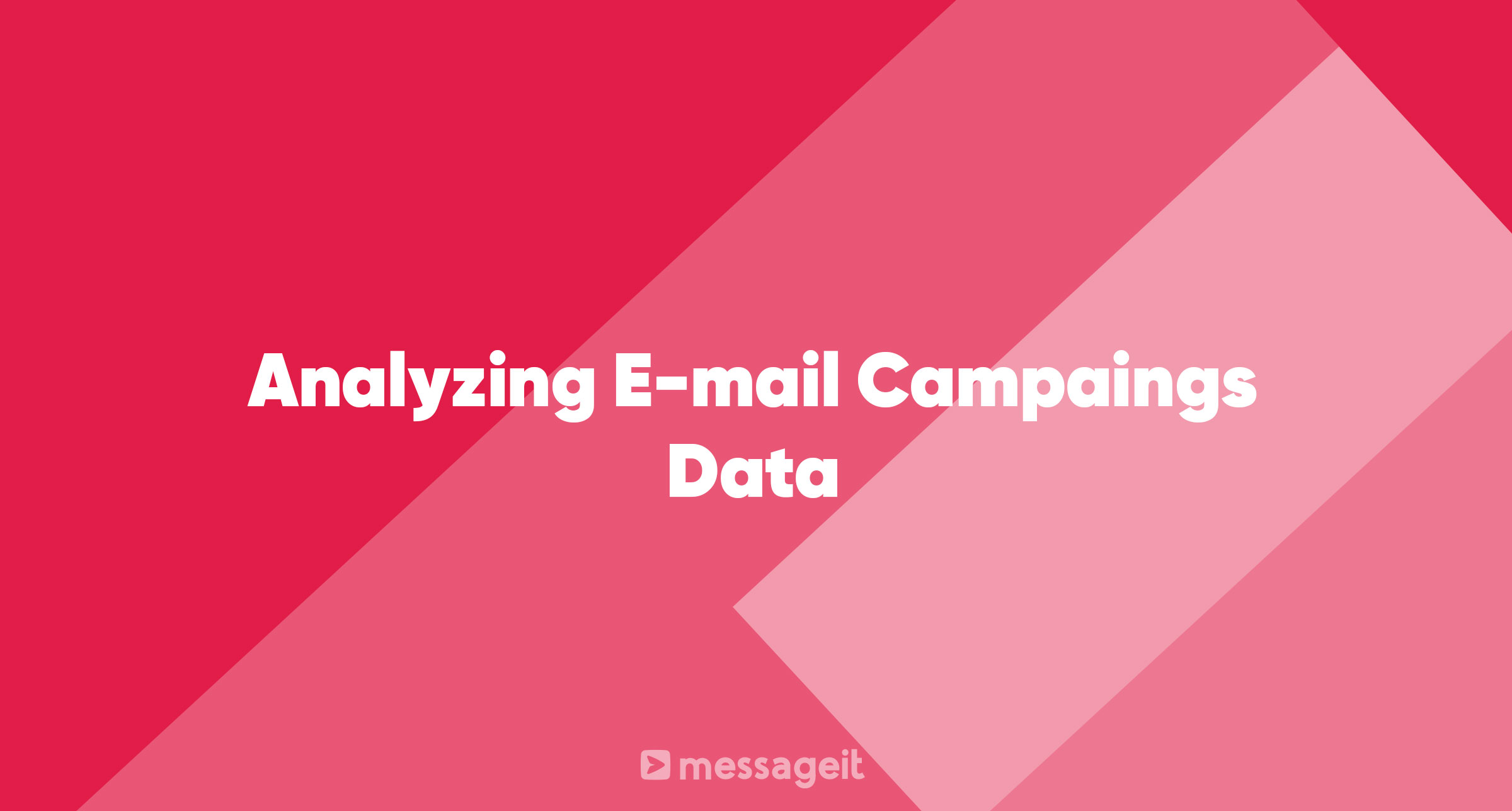Email marketing is a powerful tool in the arsenal of marketers worldwide. However, the true potential of email marketing lies not just in sending out well-crafted emails but in being able to effectively analyze the performance of these email campaigns. Mastery over the art and science of how to analyze your email campaign performance can help steer your campaigns in the right direction, optimize returns, and avoid potential pitfalls.
Let's explore this topic in-depth, breaking down the process of email campaign analysis into manageable chunks, understanding key metrics, and learning how to draw actionable insights from raw data.
Part 1: The Role of Data in Email Marketing
Understanding the Importance of Data
In the realm of digital marketing, data is king. The ability to measure virtually every aspect of your marketing campaigns is a boon that offline marketing lacks. From understanding how many people view your ads to calculating the specific ROI from your content, data provides invaluable insights.
However, the sheer abundance of data can be overwhelming. Marketers often focus on superficial metrics, ignoring the depth of insights that data can provide. This is where a more comprehensive, strategic approach to analytics comes into play.
The Trinity of Analytics
The Trinity, a concept introduced by analytics expert Avinash Kaushik, provides a holistic approach to email campaign analytics. This framework aims to identify actionable insights and key performance indicators (KPIs) by studying three interlinked aspects:
- Behavior Analysis: This involves examining the actions of your audience, answering questions like how many people opened your emails or clicked on the links.
- Outcome Analysis: This looks at the results of these actions, like how many people made a purchase or completed a lead generation form.
- Experience Analysis: This attempts to understand why your audience behaves the way they do, by conducting surveys, usability tests or A/B tests.
This multi-dimensional approach to analytics lets you see beyond basic metrics, enabling you to understand the what, why, and how of your email marketing.
Part 2: Key Metrics for Email Campaign Analysis
Bounce Rate
The bounce rate represents the percentage of your total emails that failed to reach the recipient's inbox. It can be categorized into 'hard' and 'soft' bounces. Hard bounces are due to permanent issues like invalid email addresses, while soft bounces are temporary issues like full inboxes. A high bounce rate can affect your sender reputation, so it's crucial to keep it low.
Delivery and Deliverability Rates
The delivery rate shows whether your emails are successfully delivered to the recipient's server. The deliverability rate, on the other hand, indicates how many of your emails land in the recipient's inbox instead of the spam or junk folder. Both these rates are essential to track to ensure your emails are reaching your audience.
Spam Rate
The spam rate is the percentage of your email recipients who mark your emails as spam. Keeping this rate low is vital for maintaining your sender reputation and ensuring your emails reach the inbox.
Open Rate
The open rate is the percentage of email recipients who open your email. A low open rate could indicate ineffective subject lines or poor sender reputation.
Click-through Rate (CTR)
CTR is the percentage of email recipients who clicked on at least one link in your email. It provides an overall view of how engaging your email content is.
Click-to-open Rate
Unlike CTR, the click-to-open rate measures the number of clicks as a percentage of the number of opens. It can help determine if your content is engaging to those who open your email.
Conversion Rate
The conversion rate measures the percentage of recipients who took the desired action, such as making a purchase or filling out a form. It's a direct indicator of the success of your email campaign.
Unsubscribe Rate
The unsubscribe rate indicates the percentage of recipients who opt out of your mailing list. It's important to keep this rate low to maintain a healthy deliverability rate.
List Growth Rate
The growth rate of your email list reflects the rate at which your subscriber base is expanding. Keeping a positive list growth rate is crucial for widening your reach and enhancing the impact of your email marketing.
Return on Investment (ROI)
ROI measures the cost-effectiveness and profitability of your email campaigns. It helps to understand how much value you're getting from your email marketing efforts compared to the cost.
Part 3: Leveraging Data for Campaign Optimization
Segmenting Your Audience
Segmenting your audience based on various attributes like geography, demographics, and behavior can significantly improve the effectiveness of your email marketing. It allows you to send targeted and personalized emails, increasing engagement and conversion rates.
Personalizing Your Message
Once you've segmented your audience, you can tailor your emails to resonate with each segment. This could include using segment-specific language, addressing particular needs or interests, and leveraging personalized offers or content.
Timing Your Emails
Finding the right time to send your emails can significantly impact your open and click-through rates. This may require some testing and analysis to identify when your audience is most likely to engage with your emails.
Analyzing Outcomes and Profitability
It's crucial not just to optimize for opens and clicks, but for profitability. Understanding how your email campaign metrics tie into your revenue and profits can provide a more accurate measure of your campaign's success.
Part 4: Benchmarking Your Performance
Benchmarking involves comparing your campaign metrics with industry averages. This can provide a clear picture of where you stand and highlight areas that need improvement. By regularly comparing your performance with industry benchmarks, you can set realistic goals and develop effective strategies to meet them.
Part 5: Conclusion
Learning how to analyze your email campaign performance is an ongoing process. With the right approach and tools, you can leverage data to drive your email marketing strategy, optimize your campaigns, and achieve better results. Remember, it's not just about gathering data but about interpreting it correctly and turning it into actionable insights.
